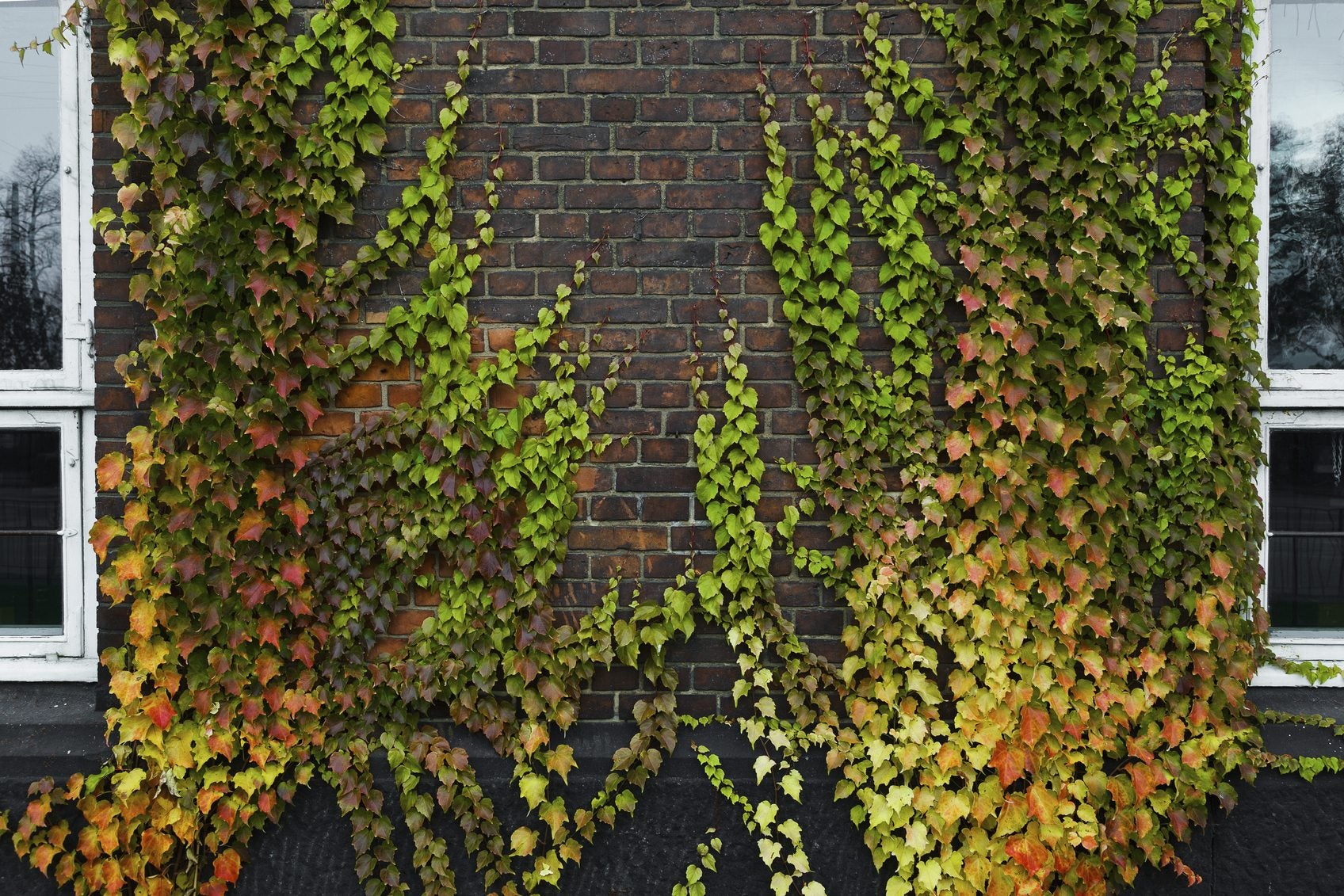Covering Brick Walls With Vines: What Type Of Vine For A Brick Wall


Glorious Boston ivy blazing in the winter or flamboyant honeysuckle clambering over a wall are sights to see. If you have a brick wall and are in search of a climbing vine to decorate and enhance your home, you not only need to decide the type of vine for a brick wall but consider the health of your house and what method the vine uses to climb.
The effect you are trying to achieve is another factor when choosing vines for brick walls. The best vines for brick walls will also depend upon how much work you want to put into the plant.
What Type of Vine for a Brick Wall?
The classic, elegant effect of ivy on the walls of a stately home is one that many of us wish to mimic. Covering brick walls with vines is also an excellent way to cover up any damage or repaired masonry that doesn't match. Vigorously growing vines are a natural cover up and add Old World appeal to even a modest rancher.
Make a list of the attributes you are looking for in a wall covering before you purchase and install. Your vines will be with you for a long time and should convey the image you wish to project as well as have the ease of care for which most of us look.
Choosing vines for brick walls should come with a cautionary note. That ivy covered masonry of old was actually damaging. If you needed to remove it to inspect or repair the brick, pulling the ivy could actually damage the mortar. Ivy self-climbs and inserts its roots into any crack or crevasse.
Modern mortar is a bit stronger, but if your brick has any damage a self-climbing vine may not be right for you. Some vines are self-climbing and will have no trouble finding footholds on the surface and in chinks between brick and will do no damage.
Still other vines are twining and will need support. No matter which type you choose, the next question is what you are hoping to achieve. Do you want evergreen winter interest, spring glory or summer fruit?
Sign up for the Gardening Know How newsletter today and receive a free copy of our e-book "How to Grow Delicious Tomatoes".
Best Vines for Brick Walls
Using climbing vines on brick walls can say something about your home and you. If you are practical and want fruiting vines, a grape or kiwi may be the plant for you. If you want old-fashioned elegance, English ivy or a climbing rose should fit the bill.
And if you are covering brick walls with vines to disguise some imperfections, fast growing Virginia creeper or jasmine may be the plant for you. The best vines for brick walls may be a bit subjective, but here are some suggestions:
- Boston Ivy – Self-climbing and turns fiery red in winter. Sticky adherent pads may be difficult to remove. Fast growing.
- Hummingbird Vine – Needs a bit of help at first but eventually will climb by itself. Brilliant, huge blooms that are very attractive to hummingbirds and other pollinating insects.
- Honeysuckle – Sweetly scented, vigorous vine, needs some support. Grows extremely fast. Draws pollinators and birds with its fruit. Deciduous.
- Clematis – Not self-climbing. Astounding masses of colorful flowers. Many different clematis types. Deciduous or evergreen.
- English Ivy – Self-climbing. Evergreen. Prefers a shady, moist location. Produces blue black fruits.
- Virginia Creeper – Self-climbing, Native plant that has early fall color and bluish black pea sized fruits. Deciduous.
- Wisteria – Wisteria is extremely fast growing, twining variety. Woody stems over time. Magnificent cascades of lavender or white blooms and delicate leaves.
- Silver Fleece – Also known as silver lace, this one needs support. Silver, white tiny flowers turn blush pink when mature. Fast growing.
- Balloon Vine – Sun lover that develops white flowers followed by heart-shaped, puffed green fruits. Needs support.
Using Climbing Vines on Brick Walls
Before you install any climbing plant, inspect your mortar and bricks first. Vines are fairly permanent and it would be a shame to have to remove them for repairs. If you have a vine that needs support, install that before planting. A trellis, lattice or wires are excellent ways to support non-self-climbing plants.
Consider how much upkeep you want to do. If you have lots of windows on the side that you plant the vine, you may have to prune consistently to keep them free. Additionally, the speed of growth and potential invasiveness of the vine should be factors. Plants like wisteria can get out of hand without training and pruning.
Others, like trumpet vine, may produce numerous babies every season and become a pest. Using vines as part of the appearance of your home adds a unique signature to your landscape. There are many wonderful plants from which to choose, but choose wisely as this feature of the home is likely to be around a long time.

Bonnie Grant is a professional landscaper with a Certification in Urban Gardening. She has been gardening and writing for 15 years. A former professional chef, she has a passion for edible landscaping.